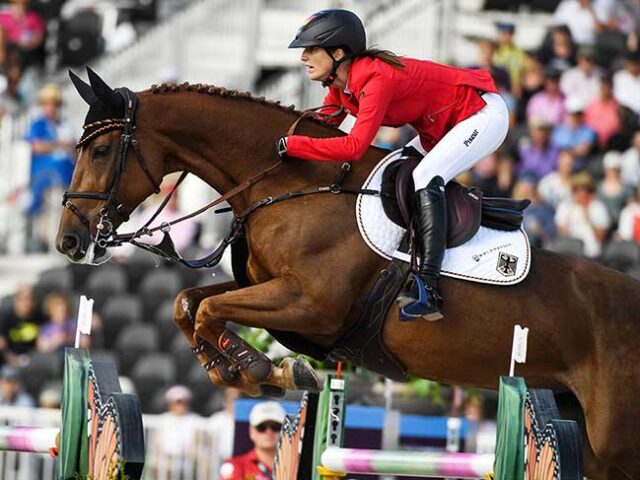By By M.L.H. Campbell, BVetMed (Hons) MA, PhD, DipECAR, MRCVS
Photography: FEI Dokoupil, Lafrentz, and Digishots
Embryo transfer (ET) is an accepted and successful technique for obtaining foals from mares without interrupting their competition careers. Recent research, however, suggests that the potential of factors including heat, exercise, repeated embryo flushing, and repeated manipulation of the reproductive cycle using exogenous hormones to have a negative impact on fertility may have been underestimated.
This paper reviews the evidence base for involvement of these factors in repeated failures to recover embryos from nongeriatric competition mares without obvious clinical or pathological indications of reproductive abnormalities. It concludes that, for some mares at least, a cessation of exercise for the periovulatory period and the period between ovulation and embryo flushing, combined with careful management of flushing-induced endometritis, and minimal hormonal manipulation of the reproductive cycle, may be necessary to optimise embryo recovery rates. Mare owners may have been encouraged to request ET for their mares following high-profile examples in the media of elite mares that have produced foals by ET whilst competing. The veterinarian should educate mare owners about the multiple factors that may affect the chances of recovering an embryo from their mares, and should manage the expectations of mare owners so that they do not approach ET programmes in the expectation that there will be no disruption to their training and competition plans.
Introduction
Equine embryo transfer (ET) has long been promoted as a means of breeding from competition mares before they undergo an age-associated reduction in fertility, without interrupting their athletic careers (Squires et al. 1999; Sitzenstock et al. 2013). This has been particularly beneficial in mares competing in sports such as dressage and eventing, in which many years of training are necessary before horses reach elite levels of competition. High-profile examples of competition mares producing foals by ET have helped to increase the uptake of ET technology amongst mare owners, and to persuade them that they can have the best of both worlds by reaping the simultaneous benefits of their mares' competitive and reproductive success.
Industry-wide, ET has undoubtedly proved a commercial success, and a useful tool for breeding from competition mares. What was, in the early days, a surgical technique with associated risks for the recipient mare has been refined, over the years, into a nonsurgical technique (Squires et al. 1982; Vanderwall and Woods 2007). There remains a persistent lack of a reliable, commercially available means of superovulating mares (Squires et al. 1999; Hinrichs 2012). Difficulties with freezing and thawing equine embryos (Stout 2012) have meant that in practice it is still commonly necessary to have a synchronised donor mare available at the time of embryo flushing, which is expensive. Despite these limitations, nonsurgical ET offers a good chance of producing a recipient pregnancy and a live birth of the donor's foal (Hartman 2011).
Notwithstanding this overall success, however, many of us who work in the field of equine ET can readily recall cases in which we have struggled to recover embryos from mares that, on paper, ought to have been ideal embryo donors. Given the economic investment that owners spend on artificial insemination and ET programmes, the planning required to fit around competition schedules, and the time veterinarians spend organising and executing the reproductive procedures, such cases can prove very frustrating for everyone concerned... To read the complete article you need to be a subscriber
CLICK HERE TO SUBSCRIBE TO BREEDING NEWS
SUBSCRIBERS CAN READ THE COMPLETE ARTICLE BY LOGGING IN AND RETURNING TO THIS PAGE




